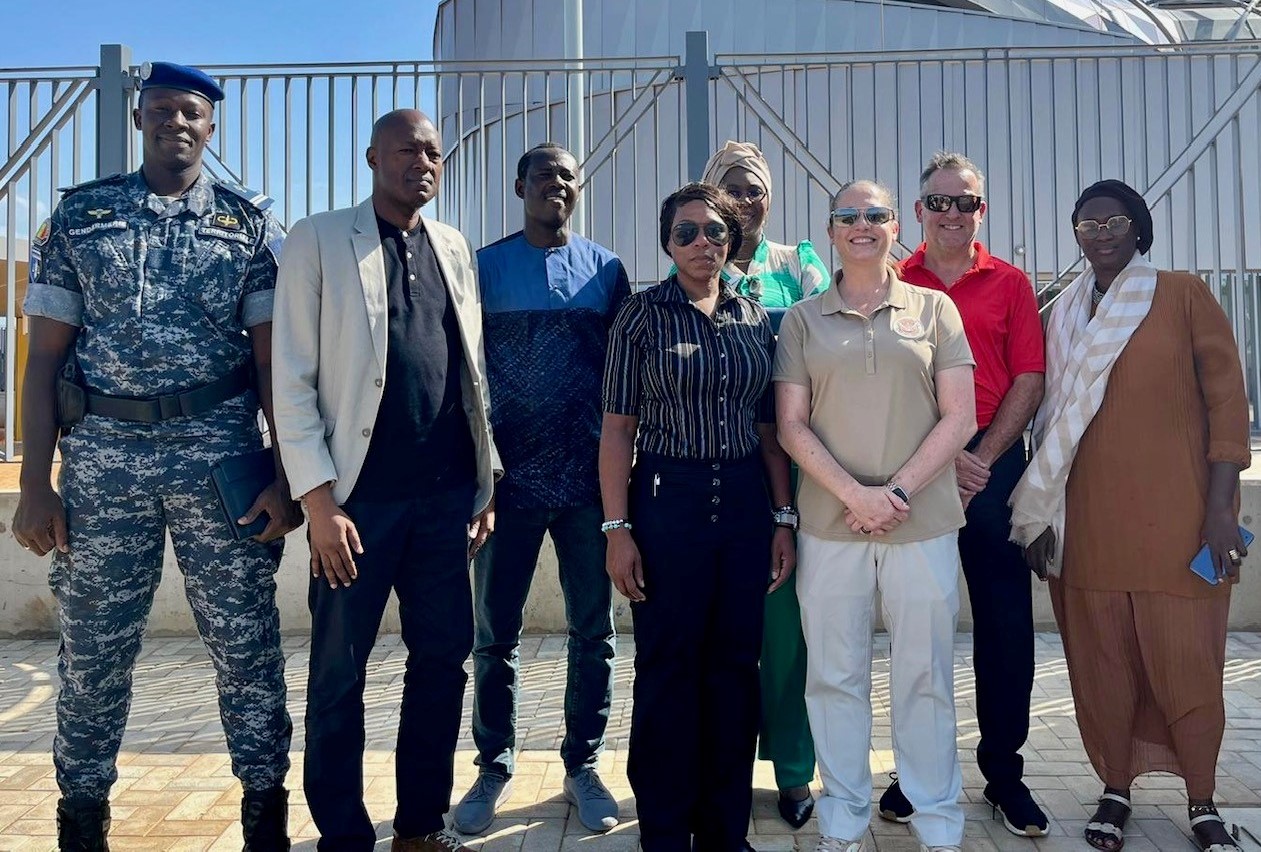 Rail terminal at Blaise Diagne International Airport near the Senegal capital of Dakar. (TSA photo)
Rail terminal at Blaise Diagne International Airport near the Senegal capital of Dakar. (TSA photo)
It was a landmark event for TSA.
For the first time ever, representatives from TSA traveled to Africa to launch a new partnership in surface transportation.
TSA representatives took the trip at the request of the High Authority of Airports in Senegal (HAAS) and the Senegalese National Agency for Civil Aviation and Meteorology (ANACIM).
With a new train terminal under construction at Blaise Diagne International Airport (AIDB) near the Senegal capital of Dakar, HAAS and ANACIM asked for TSA’s support and recommendations in rail security.

“The primary objectives were to have TSA Surface subject matter experts visit the new train station and conduct an informal joint vulnerability assessment of the station and soon-to-be active rail operation, which terminates at AIDB,” said TSA Representative (TSAR) Lori Silcox.
HAAS and ANACIM hoped to glean new insight into surface security, identify potential vulnerabilities and work with their Senegalese partners charged with securing the greater rail system. The goal was to mitigate identified vulnerabilities and determine how best to work together to ensure security of the new train station.
Silcox, TSA Cybersecurity Compliance and Enforcement Division Branch Manager B.J. Johnson and TSA Mass Transit and Passenger Rail Industry Engagement Manager Chris McKay spent several days at the new train station and terminal, meeting with local representatives who play a major role in the day-to-day operations of the transportation facility, linking the airport with the city of Dakar.
In a joint statement, Johnson and McKay said, “The purpose of the visit and various discussions was to determine what the responsible agencies are currently doing well as it pertains to security, determine the overall security posture, discuss the standardization of security at all stations along the alignment, identify vulnerabilities and gaps, and allow TSA to voice any concerns and highlight challenges.”
Silcox said until now, “Dakar’s rail system only extended halfway to the airport from the city’s downtown area.” She noted this is a significant advancement “to enable a faster and more economical option for air passengers to travel from downtown Dakar and other major suburbs.”
According to TSA Surface leadership, some countries in other parts of the world are advanced in rail security, and TSA is reaching out to further enhance rail security around the globe.

“TSA continues to expand its global outreach to partner with other nations’ transportation leaders and has historically worked with international groups to share best practices and lessons learned but has had limited engagement on the ground,” said Surface Policy Division Executive Director Scott Gorton. “We support the TSARs around the world when they request assistance.”
Silcox said most of the international surface activities have involved TSA’s rail experts, like McKay and Johnson, being invited to foreign working group meetings specific to rail and surface security, although TSA has only been involved in a few outreach efforts like the one in Senegal.

“Although TSA is known primarily as an aviation security agency to most of our international partners, I believe it is imperative that TSA begin expanding its international focus into other modes of transportation that TSA is lesser known for internationally,” Silcox emphasized. “As aviation continues its expansion and global reach, this drives the need for additional transport to airports and enhanced connectivity, particularly on the African continent.”
Silcox projects more TSA surface engagements in Africa and around the world.
“Senegal has asked for future engagements based on what they learned from this visit,” she said. “The next visit will be a multiagency effort to bring together the Senegalese components responsible for securing the full rail system in Senegal, so TSA can assist them with increasing communication and collaboration among all of the country’s agencies with a hand in the surface arena.”
By Don Wagner, TSA Strategic Communications & Public Affairs
